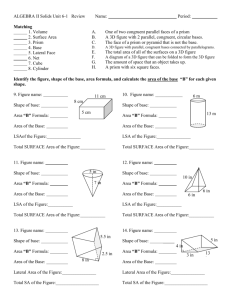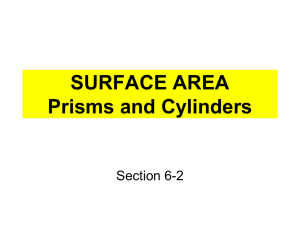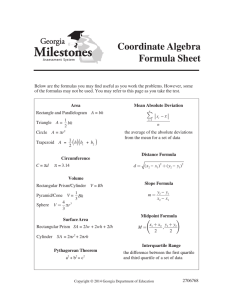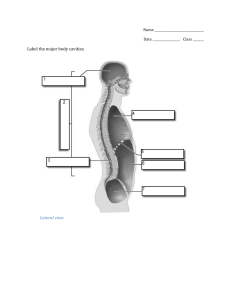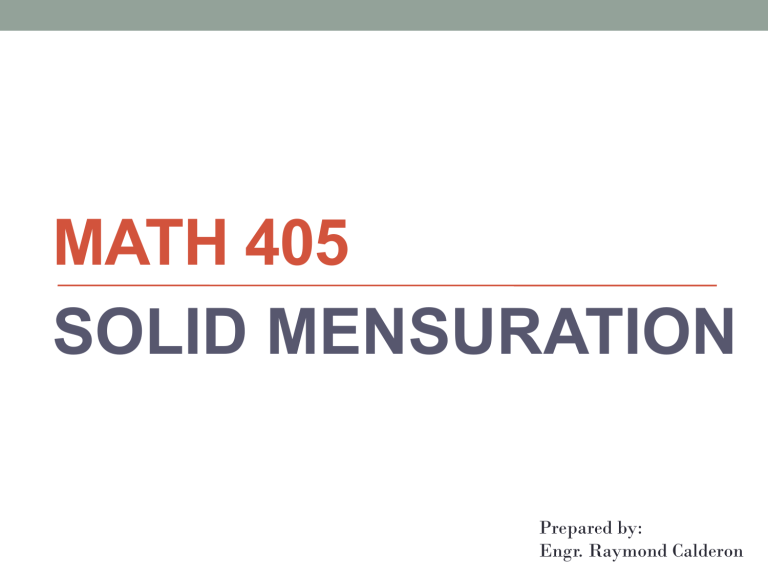
MATH 405 SOLID MENSURATION Prepared by: Engr. Raymond Calderon Solids for which V= ( Area of the base)(height) also called Rectangular Parallelepiped Solids - is any limited portion of space, bounded by surfaces Section - a plane figure cut from the solid by passing a plane through it Solid Plane M Section formed is the plane figure ABCDE Polyhedron - is a solid bounded by planes Edges - intersection of a bounding plane Faces - portions of the bounding plane included by the edges Vertices - intersection of the edges Cavalieri’s Theorem Volume Theorem Cube Properties: 1. The three dimensions of a cube are equal to each other. Therefore, all edges are equal. 2. All the faces of a cube are congruent squares. Sample Problems How much material was used in the manufacture of 24,000 celluloid dice, if each die has an edge of 1/4 inch? Sample Problems A vegetable bin built in the form of a cube with an edge of 6 ft. is divided by a vertical partition which passes through two diagonally opposite edges. Find the lateral surface of either compartment. Solution: In this figure, 𝐴1 is a square with dimension of 6in. By 6in. 𝐴2 is a rectangle with dimension of 6in. by ‘d’in. Solve first the diagonal using pythagorean theorem. d 6’ 6’ Rectangular Parallelepiped Properties: 1. The parallel edges of a rectangular parallelepiped are equal. 2. The opposite lateral faces of a rectangular parallelepiped are equal and parallel. 3. Any two opposite faces of a rectangular parallelepiped may be taken as the base. Sample Problem Cylinder Properties: 1. The bounding cylindrical surface of a cylinder is called the lateral surface, and the two bounding parallel planes are called the bases. 2. The bases of a cylinder are equal. 3. The altitude of a cylinder is the perpendicular distance between the bases. 4. The sections of a cylinder made by two parallel planes, neither of which cuts a base and both of which cut an element, are congruent. 5. Every section of a cylinder parallel to the base has an area equal to that of the base. Cylinder Sample Problem ℎ C = 2𝜋𝑟 Prism Properties: 1. The bases are congruent polygons: lateral area is the sum of the areas of the remaining faces. 2. The intersections of the lateral faces are called lateral edges. These lateral edges are equal and parallel. 3. The sections of a prism made by parallel planes cutting all the lateral edges are congruent polygons. 4. The altitude of a prism is a section perpendicular to its bases; its lateral faces are rectangles. 5. A cross section of a prism is a section perpendicular to the lateral edges. 6. A right prism is a prism whose lateral edges are perpendicular to its bases; its lateral faces are rectangles. Prism Sample Problem In this figure, the bases are in the shape of a trapezoid.
